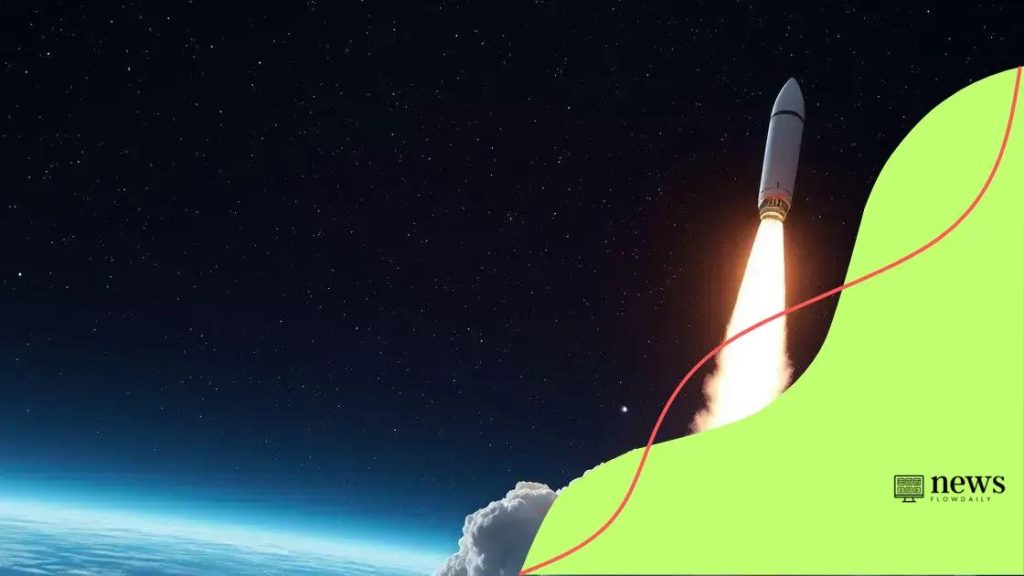Space exploration missions: uncovering the universe’s secrets

Space exploration missions focus on advancing human knowledge through international collaboration, emerging technologies, and sustainable practices, paving the way for human presence on Mars and the expansion of space tourism.
Space exploration missions capture our imagination and push the boundaries of what we know about the universe. Have you ever wondered what secrets lie beyond our planet? Let’s dive into the fascinating world of space exploration.
The history of space exploration
The journey of space exploration dates back to ancient times. Humans have always looked up at the stars, wondering what lay beyond our own planet. Our quest for knowledge has led to significant breakthroughs in science and technology.
In the mid-20th century, major milestones marked the beginning of a new era. The launch of Sputnik 1 by the Soviet Union in 1957 was the first human-made object to orbit the Earth. This event sparked the space race between the United States and the Soviet Union. For many, it signified endless possibilities for what’s possible in the cosmos.
The Apollo Missions
The United States responded with its Apollo program, which aimed to land humans on the Moon. Apollo 11 achieved this historic feat in 1969, with astronauts Neil Armstrong and Buzz Aldrin stepping onto the lunar surface. Their safe return to Earth showcased the potential of human ingenuity.
- First human steps on the Moon in July 1969
- Scientific discoveries made during lunar missions
- Advancements in rocket technology
This success led to further exploration. The Apollo program continued into the early 1970s, allowing us to gather samples and data from the Moon. These missions deepened our understanding of the Moon’s geology and its formation.
Robotic Missions
As human exploration continued, robotic missions became essential. Spacecraft like Voyager 1 and 2 provided invaluable information about our solar system. Launched in 1977, these probes ventured farther than any human-made object before, sending back stunning images and data about Jupiter, Saturn, and beyond.
Today, we continue to explore with advanced technology. Missions like Mars Rover represent the next steps in our quest. Understanding our neighboring planets can provide insight into the origins of our solar system and the potential for life beyond Earth.
With each mission, we are piecing together the vast puzzle of our universe. From early telescopes to state-of-the-art spacecraft, space exploration has always driven humanity to reach for the stars.
Key missions that changed our understanding of space
Throughout history, there have been several key missions that significantly changed our understanding of space. Each mission has brought new insights and expanded our view of the universe, revealing unknown mysteries and enhancing our scientific knowledge.
One of the most impactful missions was the Hubble Space Telescope, launched in 1990. It has provided breathtaking images and crucial data about distant galaxies, nebulae, and the expanding universe. The ability to observe space without atmospheric interference has transformed astronomy and changed how we perceive the cosmos.
The Voyager Missions
The Voyager 1 and Voyager 2 missions, launched in 1977, were groundbreaking. These spacecraft traveled beyond our solar system, collecting data about the outer planets and their moons. They transmitted valuable images and enhanced our understanding of these distant worlds.
- Revealed detailed information about Jupiter, Saturn, Uranus, and Neptune
- Provided insights into the composition of planetary atmospheres
- Discovered numerous moons and rings around the gas giants
Moreover, Voyager’s journey into interstellar space has opened up new avenues for exploration. The spacecraft continue to send data back, enlightening us about the nature of the universe beyond the solar system.
The Mars Rovers
Another landmark achievement has been the exploration of Mars through various rovers. The Mars Spirit and Opportunity rovers, launched in 2003, provided crucial evidence of past water on Mars. These findings suggest the potential for life beyond Earth, igniting further interest in Martian exploration.
The more recent Curiosity rover and Perseverance rover continue this quest, conducting experiments and analyzing the Martian soil. Their data helps us understand the planet’s climate, geology, and the possibilities of past life. Each mission contributes to piecing together the story of Mars and its role in our solar system.
These missions highlight humanity’s relentless pursuit of knowledge. By studying distant celestial bodies and cosmic phenomena, we enhance our understanding of the universe and our place within it. With each mission, we come closer to answering the profound questions of existence and our connection to the cosmos.
The technology behind space exploration

The technology behind space exploration plays a vital role in uncovering the mysteries of the universe. From advanced rockets to sophisticated robotics, every aspect of technology enhances our ability to explore beyond Earth.
One of the key components is the development of powerful launch vehicles. These rockets are designed to transport payloads into space. Over the years, advancements in propulsion technology have led to the creation of more efficient engines. The Space Launch System (SLS) is an example of this innovation, allowing for deep space missions.
Robotic Technology
Robots have become essential in space exploration. They can travel to harsh environments where humans cannot. For instance, the Mars rovers like Curiosity and Perseverance are equipped with advanced instruments to analyze the Martian landscape. These rovers provide scientists with data about the planet’s geology and climate.
- Remote sensing to measure atmospheric conditions
- Sample collection for analysis
- Autonomous navigation on uneven terrain
The success of these missions showcases how robotic technology has transformed our understanding of other planets.
Communications Systems
Effective communication is also crucial for space missions. Satellites relay information between spacecraft and Earth. The use of high-frequency radio signals ensures data is transmitted clearly over vast distances. Innovations like laser communication systems are being tested, promising faster transmission speeds in the future.
Additionally, advancements in materials science have led to the development of heat-resistant materials. These materials are essential for spacecraft reentry into the atmosphere. They protect delicate instruments and crew members, ensuring the safe return of missions.
Each technological advancement enables us to push the boundaries of space exploration further. From studying distant galaxies to landing on other planets, we owe much of our progress to the innovative technologies developed over the years. With these tools, humanity continues to reach for the stars.
International collaboration in space missions
International collaboration in space missions has become essential for advancing our exploration efforts. Countries around the world recognize that working together can lead to greater scientific discoveries and technological advancements. This collaboration allows sharing of resources, knowledge, and expertise.
One of the most notable examples of international teamwork is the International Space Station (ISS). Launched in 1998, the ISS is a joint project involving space agencies from the United States, Russia, Europe, Japan, and Canada. Astronauts from various countries work together on scientific research, conducting experiments in microgravity. This cooperation fosters a spirit of unity while exploring space.
Benefits of Collaborative Missions
Collaborative missions bring many benefits, such as:
- Pooling of financial resources to fund large-scale projects
- Diverse expertise leading to innovative solutions
- Shared technology accelerating development
By combining efforts, nations can tackle complex challenges in space exploration more effectively.
Key Collaborative Projects
Apart from the ISS, several key projects highlight the importance of international collaboration. The Mars Sample Return Mission is planned to be a joint effort between NASA and the European Space Agency (ESA). This mission aims to bring samples from Mars back to Earth, allowing scientists to study the planet in detail.
Another example is the James Webb Space Telescope, developed with contributions from NASA, ESA, and the Canadian Space Agency. Its launch represents a major step in our understanding of the universe, as it will observe distant galaxies and study the atmospheres of exoplanets.
These collaborations not only expand our knowledge but also promote peaceful relations among nations. Through joint missions, countries work together towards common goals, exploring the unknown together. International cooperation in space serves as a powerful symbol of what can be achieved when we unite in the pursuit of knowledge.
Future trends in space exploration
Future trends in space exploration are exciting and full of possibilities. As technology advances, new opportunities arise for scientists and explorers. These trends aim to deepen our understanding of the universe and push beyond our current boundaries.
One major trend is the focus on human exploration of Mars. NASA and private companies, like SpaceX, are working on missions that aim to send humans to Mars. These missions will not only examine the planet’s surface but also investigate the potential for human colonization.
The Role of Private Companies
Private companies are playing a crucial role in shaping the future of space travel. They are developing technologies that were once exclusive to government agencies. For example, SpaceX’s Starship aims to transport humans to the Moon and Mars.
- Reducing costs of space travel
- Increasing frequency of launches
- Innovating new spacecraft designs
This shift allows for a more competitive landscape, where multiple players work towards common goals in space exploration.
Space Tourism
Another exciting trend is the emergence of space tourism. Companies like Blue Origin and Virgin Galactic are developing spacecraft to take civilians on suborbital flights. These experiences will introduce more people to the wonders of space and could pave the way for future tourism on other planets.
In addition, advancements in robotics and artificial intelligence will enhance our exploration capabilities. These technologies allow for autonomous systems that can operate in harsh environments without human intervention. Robots will be crucial for conducting research on distant planets and moons, gathering data, and even building outposts for future human explorers.
As we continue to explore and understand our universe, the implementation of sustainable practices will also be vital. Developing technologies for sustainable energy and resource management in space will ensure that we can explore without depleting resources. This focus on sustainability will be an important consideration in all future missions.
FAQ – Frequently Asked Questions about Space Exploration
What is the main goal of future space exploration missions?
The main goal is to deepen our understanding of the universe, with a focus on human missions to Mars and potential colonization.
How are private companies influencing space exploration?
Private companies like SpaceX are developing new technologies and reducing costs, making space travel more accessible.
What role does sustainability play in future space missions?
Sustainability is crucial as future missions aim to protect Earth’s resources and ensure that we can explore without causing harm.
How will robotics impact space exploration?
Robotics will enable autonomous systems to explore harsh environments, gather data, and build infrastructure on other planets.





